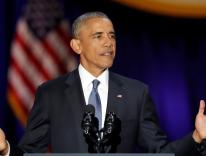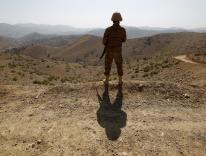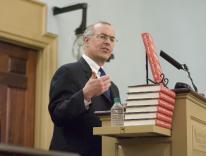“Justice has been done,” President Barack Obama told the world in announcing that U.S. commandos had raided a compound in Pakistan and killed Osama bin Laden, leader of Al Qaeda, mastermind of the 9/11 attacks on the United States, and for ten years the world’s most elusive terrorist.
Undoubtedly, a certain kind of justice was done, and the relief and satisfaction felt by many of the families of those murdered at bin Laden’s direction cannot be denied. Yet questions about the circumstances of bin Laden’s death remain. Almost every detail of the administration’s initial accounting of what happened in that compound turned out to be either misleading or wrong. The first reports claimed that bin Laden had been killed at the end of an extended firefight and that in the final confrontation he had used a woman as a shield. As it turns out, the firefight was brief and involved not bin Laden but three of his associates (including one of his sons), all of whom were quickly dispatched. No shots were fired by bin Laden. Indeed, it now appears that he was unarmed when killed. When the commandos reached bin Laden’s bedroom on the third floor of the building, one of his wives reportedly lunged at them and was shot in the leg. Bin Laden was then shot in the head and chest.
Why the administration released what proved to be erroneous information remains unclear. The contradictory stories were blamed on the “fog of war,” but the tale told seemed too neatly predictable to be the result of mere confusion. Rather, the stories seemed designed to evade the question of whether any effort had been made to capture rather than kill bin Laden. It appears that he was summarily executed, or at best shot only because he had access to weapons in the room.
Presumably the commandos were under no legal or moral obligation to “arrest” him during what was a military operation against an active combatant. In his statement, Obama said he had given an order to either kill or capture bin Laden. Other administration officials have said that bin Laden would have been captured and brought to the United States to stand trial if that had been possible. Skepticism about such claims is justified. Many knowledgeable observers presume (approvingly) that the mission was expressly to kill bin Laden, whether he was armed or unarmed, whether he attempted to surrender or resisted. Many go further, arguing that imprisoning and trying terrorists is a needless formality. But others worry that post-9/11 America has lost the political, legal, and moral confidence to give someone like bin Laden his day in court.
It is difficult to question the judgment of those involved in such a clandestine and dangerous mission. The commandos were, for all intents and purposes, operating in hostile territory and facing a cunning and ruthless enemy. This was not a police action, but very much an act of war. Nevertheless, the popular idea that summary executions are no less just than bringing terrorists to trial is lamentable. Bin Laden was a mass murderer, but so were the German officers and politicians who were tried, convicted, and punished at Nuremberg. Adolf Eichmann was in some significant measure responsible for the deaths of hundreds of thousands of defenseless civilians, yet Israel made a point of apprehending rather than assassinating him, and then putting him and his crimes on trial for the world to see. It is possible that capturing bin Laden would simply have been too dangerous and uncertain an operation. There should be no question, however, that the greater triumph of justice would have been to put such a criminal on trial rather than to end his life under such highly ambiguous circumstances.
What does bin Laden’s death mean for the battle against Islamic extremism? Less than one might think. Al Qaeda’s capabilities have been so degraded that in many ways bin Laden was more a phantom than an actual threat. In any event, the challenges facing the United States in Afghanistan and Pakistan will not be solved by military means alone. The success of the operation against bin Laden will, one hopes, give new impetus to President Obama’s stated objective of negotiating a settlement among Afghanistan’s warring parties and withdrawing U.S. troops beginning this summer. One of bin Laden’s goals was to draw the United States into a prolonged war in the Islamic world. Now that’s he’s dead, it’s time to end the war he started.
May 17, 2011
Related: A Death to Celebrate? by Ronald Osborn
Please email comments to [email protected] and join the conversation on our Facebook page.
Share
Previous Story
Departures
Next Story
On the Road


